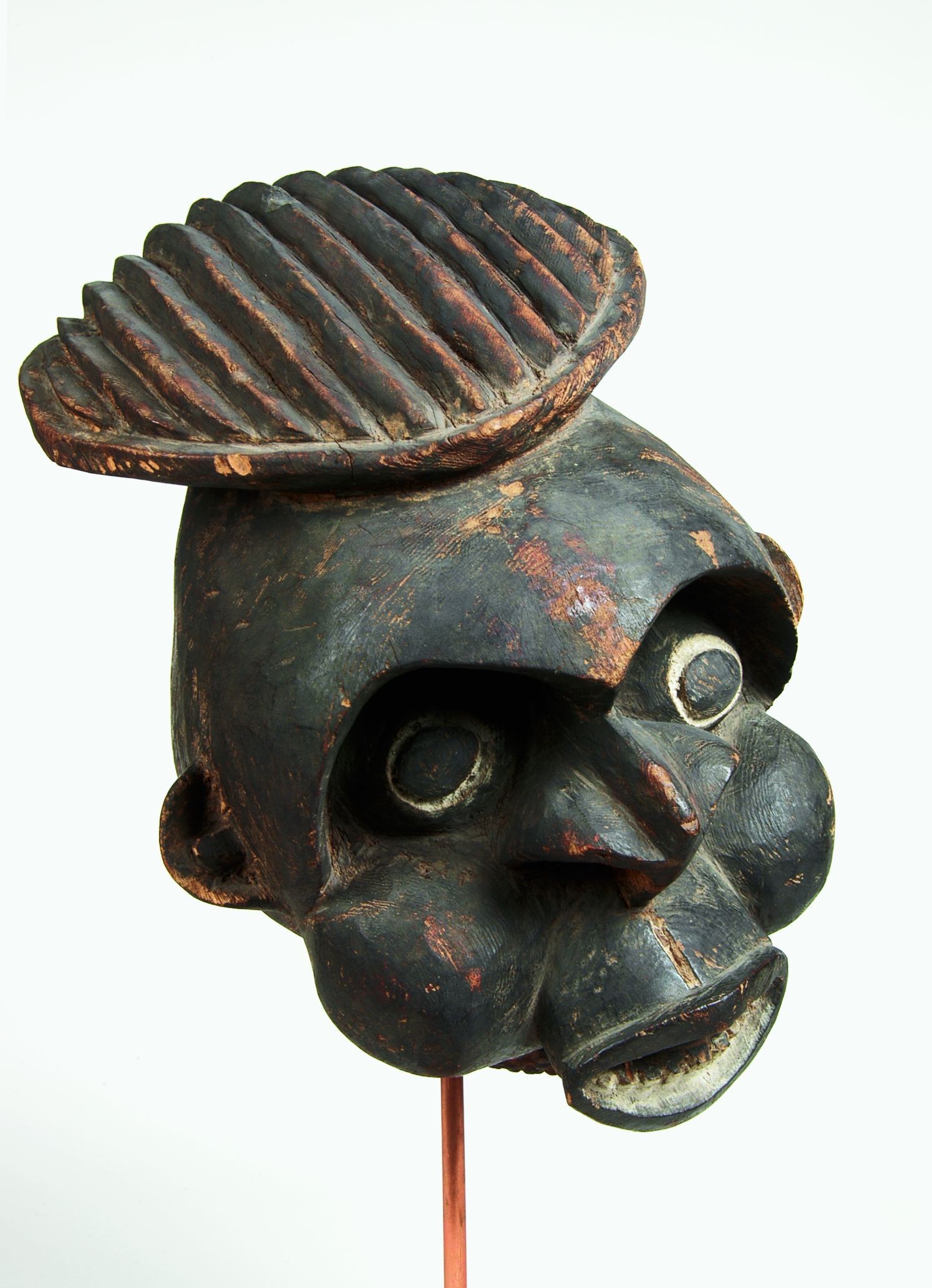 Dancemask, Photo: Eva Winkler
Dancemask, Photo: Eva Winkler
Ernst Ludwig Kirchner and the art of Cameroon
In June 1905 the artists’ association “Die Brücke” was founded in Dresden by Ernst Ludwig Kirchner, Fritz Bleyl, Erich Heckel and Karl Schmidt-Rottluff. These four academy friends were determined to find “immediate and unadulterated” new ways of artistic expression and to leave the path of academic rules and traditions. The “Brücke” sets the beginning of modern art in Germany, their representatives being curious men who wished to go beyond national and cultural borders. During their visits of the collections of the Ethnological Museums in Dresden and Berlin – then felt as “exotic” – the members of the group received powerful incentives from the material culture of extra-European societies, especially in the years between 1907 and 1910.
The exhibition “Ernst Ludwig Kirchner and the art of Cameroon” is meant as a study about Ernst Ludwig Kirchner (1880-1938) and his relationship to the art of Cameroon. It presents 15 exhibits of African art jointly with 16 of Kirchner’s works. Its aim is to document how African sculpture in general and that of Cameroon in particular affected the painting and plastic art of the Expressionist artist Ernst Ludwig Kirchner. It was suggested by the discovery that Kirchner possessed a genuine work of Cameroonian wood carving. It is a leopard stool made in the 19th century, the art work of a Babanki master carver from the Tungo Area. This stool accompanied Kirchner over nearly thirty years of his life, and it claims centre stage in the exhibition.
